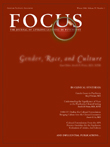Pharmacological Treatment of Depression in Older Primary Care Patients: The PROSPECT Algorithm
Abstract
Introduction
Why was a new treatment algorithm developed?
Recommended first-line antidepressant
Recommended dosages and duration of treatment
Management of patients intolerant to treatment
Management of patients who fail to respond to treatment
Discussion
| Antidepressant | Target Daily Dosage or Plasma Concentrationa | Maximum Daily Dosage or Plasma Concentrationa |
|---|---|---|
| Citalopram | 30 mg | 40 mg |
| Fluoxetine | 20 mg | 40 mg |
| Fluvoxamine | 150 mg | 300 mg |
| Paroxetine | 20 mg | 40 mg |
| Sertraline | 100 mg | 200 mg |
| Trazodone | 300 mg | 600 mg |
| Nefazodone | 200 mg | 400 mg |
| Bupropion | 200 mg | 400 mg |
| Mirtazapine | 30 mg | 45 mg |
| Venlafaxine | 150 mg | 300 mg |
| Phenelzine | 45 mg | 90 mg |
| Tranylcypromine | 30 mg | 60 mg |
| Nortriptyline | Plasma concentration ≥50 ng/ml | Plasma concentration 120 ng/ml |
| Desipramine | Plasma concentration ≥100 ng/ml | Plasma concentration 150 ng/ml |
a Patients are considered to have failed an adequate trial if they have received this dosage for ≥6 weeks with no or minimal improvement.
| Augmentation Strategy | Substitution Strategy |
|---|---|
| Preserves improvement produced by the current antidepressant (in partial responders) | Avoids potential drug-drug interactions |
| Prevents delays associated with discontinuation of the current agent and titration of a new one | Simpler medication regimen |
| Results in a longer trial of the current agent | Lower costs |
| Combination of two antidepressants affecting different neurotransmitter systems may have a synergistic effect | Easier attribution and management of side effects |
| No response to an antidepressanta |
| Step 1: If applicable, optimize trial of current agent (see Table 1) |
| Step 2: Start with or switch to citalopram according to the study protocol |
| Step 3: Switch to bupropion SR 200–400 mg/day in two divided doses |
| Step 4: Switch to venlafaxine XR 150–300 mg q.a.m. |
| Step 5: Switch to nortriptyline (plasma concentration 80–120 ng/ml) |
| Step 6: Switch to mirtazapine 30–45 mg q.h.s. |
| Partial response to an antidepressantb |
| Step 1: Optimize trial of current agent (see Table 1) |
| Step 2: Augment with bupropion SR 200–400 mg/day in two divided dosesc |
| Step 3: Augment with nortriptyline (plasma concentration 80–120 ng/ml)c |
| Step 4: Augment with lithium (plasma concentration 0.60–0.80 mEq/L) |
| Step 5: Follow steps 2, 4 and 6 for non-responders |
a Non-response is defined by a reduction in score on the Hamilton Depression Rating Scale (HDRS) of <30% after 6 weeks of treatment or of <50% with a score above 10 after 12 weeks of treatment.
b Partial response is defined by a reduction in HDRS score of ≥50% with a score above 10 after 12 weeks of treatment.
c This assumes that a patient is being treated with an SSRI or SNRL Bupropion or nortriptyline would first be augmented with citalopram 20–40 mg q.h.s. Patients on a TCA other than nortriptyline or an MAOI would first be switched to citalopram.
Footnotes
References
Information & Authors
Information
Published In
History
Authors
Metrics & Citations
Metrics
Citations
Export Citations
If you have the appropriate software installed, you can download article citation data to the citation manager of your choice. Simply select your manager software from the list below and click Download.
For more information or tips please see 'Downloading to a citation manager' in the Help menu.
View Options
View options
PDF/EPUB
View PDF/EPUBGet Access
Login options
Already a subscriber? Access your subscription through your login credentials or your institution for full access to this article.
Personal login Institutional Login Open Athens loginNot a subscriber?
PsychiatryOnline subscription options offer access to the DSM-5-TR® library, books, journals, CME, and patient resources. This all-in-one virtual library provides psychiatrists and mental health professionals with key resources for diagnosis, treatment, research, and professional development.
Need more help? PsychiatryOnline Customer Service may be reached by emailing [email protected] or by calling 800-368-5777 (in the U.S.) or 703-907-7322 (outside the U.S.).

